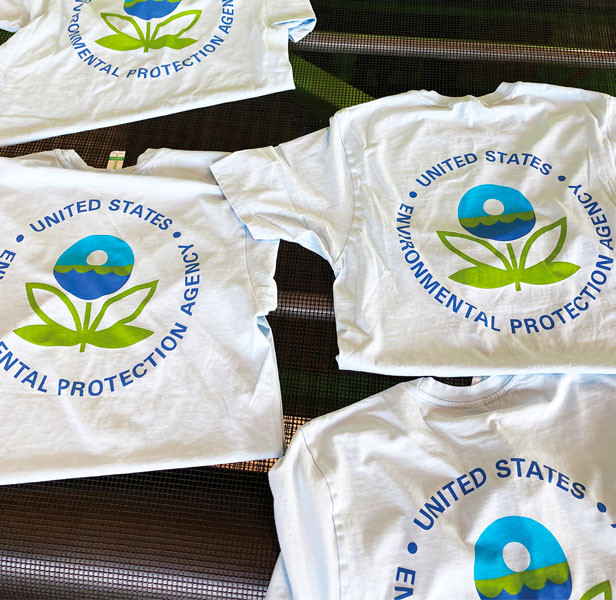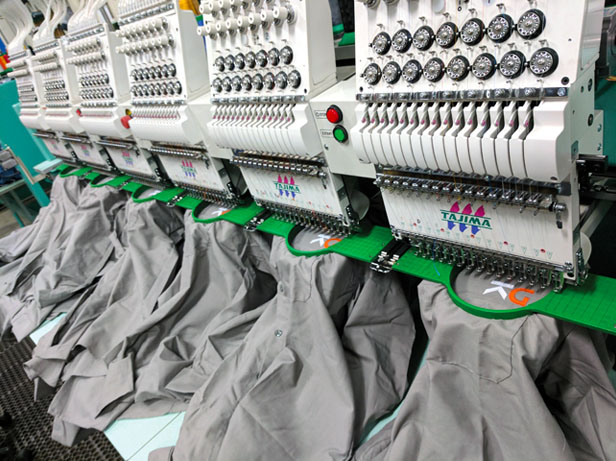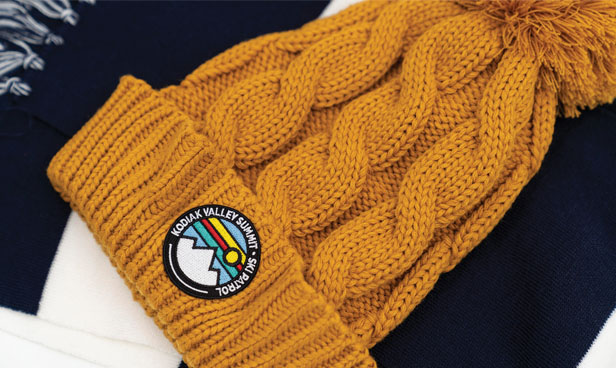February 07, 2023
Fact vs. Fiction: Debunking 5 Decorated Apparel Myths
The advancing pace of technology and innovation is turning standard apparel decoration wisdom on its head.
In the past decade, the decoration world has made great technological strides. That means many processes that weren’t available before are now actually possible. Meanwhile, some long-held beliefs don’t measure up when you look deeper.
Wondering what common knowledge in the decorating world isn’t actually true? Read on to learn about five decorated apparel myths.
MYTH
Heat-Applied Patches Don’t Last Unless They’re Sewn Down.
To be fair, says Josh Ellsworth, vice president of sales and marketing at Stahls’ (asi/88984), heat-applied patch technology wasn’t always the best – so this particular myth used to be true. But that’s changed, especially over the last few years. “The majority of the apparel decorating marketplace hasn’t seen how far technology has come in the last three years,” Ellsworth says. “Many don’t understand the benefits being offered through patches of all styles and applying those patches with new heat press technology. New industrial-grade heat-activated adhesives make it possible to apply these challenging products with highly durable results.”

Advancements in decorating technology mean heat-applied patches on caps no longer need to be sewn-down for durable, long-lasting results. FlexStyle embossed emblems are available from Stahls’ (asi/88984); stahls.com
So if your customers come to you worried that a heat-applied patch is going to peel off because one they got years ago actually did, tell them they don’t need to be concerned. Ellsworth says it’s often as easy as showing them a video of the process to quell any hesitancy. “Seeing is believing,” he says.
“The majority of the apparel decorating marketplace hasn’t seen how far technology has come in the last three years.”Josh Ellsworth, Stahls’
MYTH
Water-Based Ink Is Always Sustainable.
If you’ve ever ordered printed shirts, you’ve likely come across discharge ink and heard all about how environmentally friendly it is. Well, owner Jamie Dillon of Print Natural, a Philadelphia-based screen-printing shop focused on sustainable and eco-friendly printing, says that while discharge ink is water-based, that doesn’t mean it’s actually sustainable.
“Discharge ink uses chemicals like formaldehyde to dissolve the dye in the shirt back to natural cotton and then prints on top of that,” Dillon says. “That process gives off super toxic chemicals for both humans and the planet, mainly sulfur dioxide.” Dillon notes that the chemicals can give people nasty skin reactions, and the people manufacturing the ink even say to wash the clothing item before it’s worn. “Water-based ink means that water is the pigment carrier rather than petroleum-based plastics, which is the case in plastisol ink, what the vast majority of screen printers in the country use,” he says. “If something’s water-based, it can still have toxic chemicals.”
“If something has water-based ink, it can still have toxic chemicals.”Jamie Dillon, Print Natural
A lot of inks – even ones made from algae or hemp – can have toxic chemical additives. The only real way to make sure ink is sustainable is to look for a Global Organic Textile Standard (GOTS) certification. If a supplier has that certification, it means that GOTS has gone through all the chemicals in materials being used and ensured they won’t harm humans or the planet.

Water-based ink isn’t automatically sustainable, points out Jamie Dillon, owner of Print Natural, a screen-printing shop focused on sustainability.
“The problem is anybody can say something is eco-friendly,” Dillon says. “There are no rules. A company can say our ink has soy in it, it’s eco-friendly. But it could literally have the most toxic chemicals known to man. It’s basically the Wild West and subjective in terms of what’s sustainable and what’s not from one person to another. It’s very confusing because there’s so much stuff out there and honestly, I think a lot of printers don’t even know.”
MYTH
You Can Use The Same Logo For Everything.
Embroiderer Erich Campbell once had a customer who wanted their logo reproduced on a hat — except the logo was of a character standing upright. It was important to the customer that the face be recognizable, Campbell says, but “in that design, the face would have been the size of a pencil eraser.” It’s a myth Campbell comes across often, that one logo can be slapped on everything the same and it will still turn out looking perfect. In reality, though, it’s better to have a branding package instead of just one image.
“Apparel is one of those places where you can do coordinating design with the rest of the branding package,” Campbell says. “When you design for a hat and you design for a shirt, it’s not exactly the same as the logo in the rest of your digital assets. You design for the space.”

The logos being embroidered on these shirts are different than the main company logo – reinforcing embroiderer Erich Campbell’s advice that companies shouldn’t use one logo across all decoration types and apparel styles.
For hats in particular, the decoration space is vertically short and horizontally wide. So if your customer’s logo is vertically oriented, it might end up looking terrible on the hat because it could be quite small and narrow. Campbell’s hat customer ended up tweaking the logo so the character was laying down, with the face still recognizable from a distance.
It’s similar when a logo or design has a lot of text in it. If it’s going to be printed or embroidered onto a small space, no one will be able to read it. “If you can’t read the decoration from three to four feet away, it’s not useful,” Campbell says. “There’s really no point in putting it on there.”
MYTH
Embroidery Is The Only Option For Textured Fabrics And Headwear.
In the past, embroidery was looked to as the best option for decorating hats and textured fabric – because applying any heat could damage the material. But now, Ellsworth says, decorators have more options.

Heat-applied patches have emerged as an intriguing alternative to embroidery for decorating headwear. Thicker patches often yield a better result. Custom patches available from Stahls’ (asi/88984); stahls.com
“Today, applying caps and textured fabrics with dimensional emblems is best done with top and bottom heat,” he says. “By heating through the bottom of the item being decorated, you’re able to reach the adhesive and generate a more durable bond. Subsequently, a decorator is able to reduce the amount of top heat needed, which greatly reduces the risk of damaging the product being decorated. This means no scorching of heat-sensitive fabric and no heat press crease lines on structured caps.”
For patches specifically, more than 10 styles exist that can both cover the seams on a six-panel cap and adhere to a sherpa pullover’s dense texture. Ellsworth notes that thicker patches often have a higher-quality result.
MYTH
Digital Embroidery Previews Are Exactly How The Decoration Will Turn Out.
If you’re looking to order embroidered products, Campbell has something he needs you to know: “If you trust what’s on the screen in embroidery software, you’ll always be let down.”
He’s referring to the embroidery preview that customers look at before a job goes to the machine. People not in the embroidery industry might look at a mockup and think the lettering looks uneven, or everything overall looks too thick. But it’s not like a digital proof for printing. Embroidery doesn’t work like a thread printer, Campbell says.
“What’s on the screen for an embroidery preview is never what comes out of the machine because of the stresses of embroidery, the literal tension everything’s under,” he says. “The preview can’t be seen as the end-all, be-all for color or outcome. A line of text will almost always look uneven at the top and bottom. But as the stitches are formed, it becomes straight. It becomes aligned.”
Jennifer Billock is an award-winning writer, bestselling author and editor of the Kitchen Witch Newsletter. Check out her website at jenniferbillock.com and follow her on Twitter @jenniferbillock.